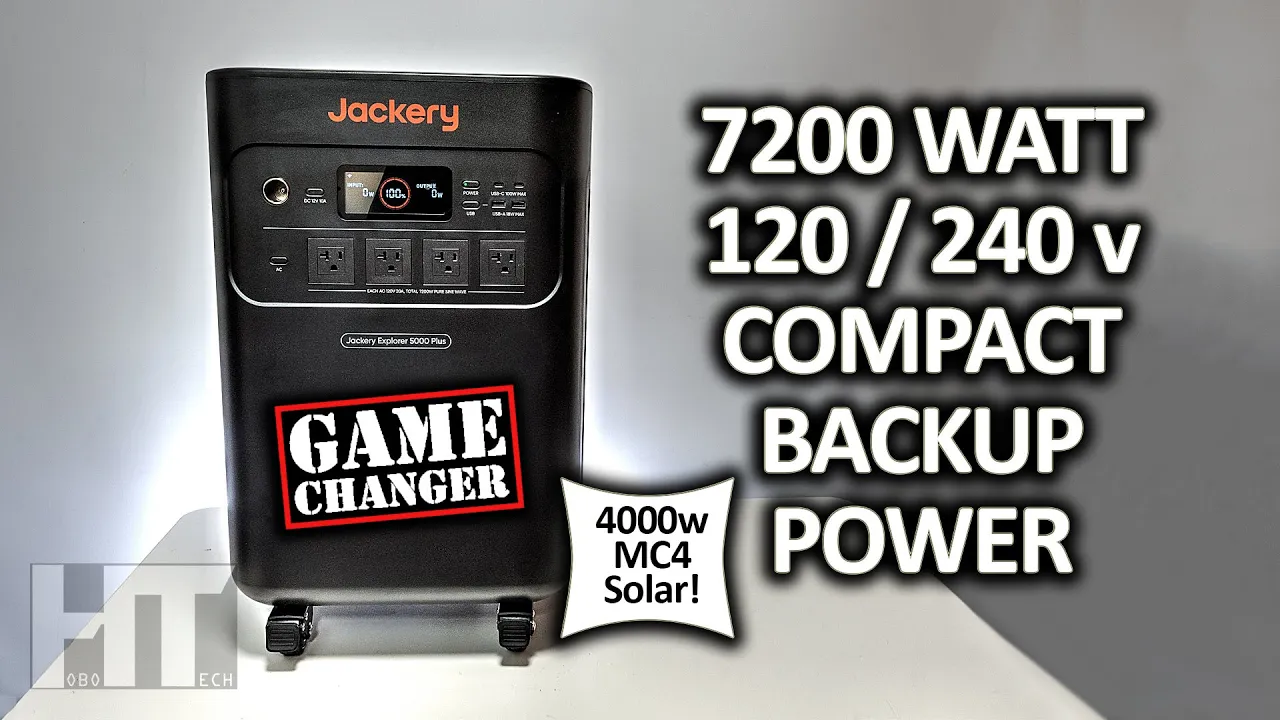
The BIGGEST Jackery EVER! Explorer 5000 Plus Home Backup Solar Generator
The Professor reviews Jackery’s largest portable power station — the 7200 watt Explorer 5000 Plus home backup power system.
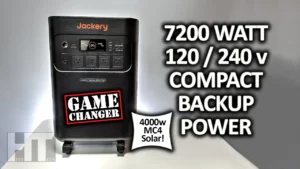
Intro-
-
Oh boy have things come a long way since then. That review was before the professor was even born. And guess what, I still have that very first Jackery and it works perfectly. Fast forward nearly 6 years and we go from Jackery selling tiny 500 cycle 240Wh camping generators, to massive 5000 watt hour whole home backup systems rocking 4000 cycles. But the big question everyone wants to know, is it any good? Let’s find out!
Features-
-
Battery Capacity/Tech/Cycles: The Explorer 5000 packs a 5040Wh LiFePO4 battery rated 4000 cycles to 70% capacity
-
Size/Weight: This is the biggest and baddest Jackery ever made and it certainly feels it, weighing in at 135 lbs and measuring 25 inches tall by 15.5 inches wide and 16.5 inches deep. I think the extra inch is for the wheels.
-
Design/Display: It has the typical modern Jackery display that offers, input/output watts, time to charge/discharge, battery % with spinny icon and more than a dozen other indicator icons. This does have both high and low temperature protection so you won’t be able to damage the battery in extreme conditions.
-
Inverter Size/Type: This jacked Jackery has a massive 7200w pure sine inverter with a big trick up its sleeve. It has both 240v split phase and standard 120v outputs that work simultaneously, which is unlike much of the competition. On the front, you get 4x 20A standard outlets split into two pairs that supports 3600w per pair with a 2400w maximum per outlet. On the side, you get a 240v NEMA 14-30R 4 prong twist lock receptacle and a 240v NEMA 14-50 that doubles as both a 50A RV hookup and 50A appliance hookup. So yes, you can plug in your electric oven, electric drier, or a 240v well pump and power them easily. You can also charge your EV with a level 2 charger for those inclined to do so.
-
Ways To Charge: The 5000 can charge from standard 120v grid power at 1800w for charging the built in battery in about 3.5 hours.
-
If you opt for Jackery’s Smart Transfer Switch you can charge with 240v at 4000w for topping up in 1.7 hours. Note, getting their transfer switch is the only way to charge with 240v service.
-
As for solar, the 5000 has two MPPT solar controllers with 3 inputs. The low voltage solar inputs are a pair of standard Jackery proprietary 8020 (or 8mm) barrel plugs wired in parallel that supports 16-60v at 10.5A each or 21A combined for a maximum of 1200w.
-
If you plan to use Jackery’s new 500w portable panel, two of those plugged into the low PV port will charge the unit in 6.5 hours under ideal conditions. You can use your own solar panels on the 8mm inputs if you buy both an 8mm to MC4 adapter and a 7909 to 8020 adapter (both of which I have available on https://gohobo.io/adapters).
-
However, for the first time in Jackery’s history, they are offering standard built in MC4 connections for their high voltage solar input which supports from 135v all the way up to 400v of solar. So you can plug in any basic solar panels you want without any muss or fuss but with one big caveat. You need to have enough solar panels in series to reach a minimum of 135v in order to start charging. At 135v you’ll see in the upcoming tests that you can only send up to 2000w at 15A at that voltage so essentially you’ll want to get that voltage up past 200 if possible where the Jackery can start MPPT-ing at its maximum 4000w. At that rate it will charge from solar in just under 2 hours.
-
Note that the 5000 doesn’t officially support 12v charging from a vehicle, but in my testing I found out that it actually does at 100 watts through the low voltage PV input — which is ridiculously slow, and would literally take more than 2 days to charge, but it is possible.
-
By the way, if volts amps and watts is another language to you, check out my HOBO University playlist where I teach you what all this techno jargon mumbo jumbo means.
-
-
12v Output Types: This Jackery offers a single 12v cigarette lighter style car accessory port for running something like a 12v fridge. It supports up to 10A and is regulated at 13.2v.
-
USB Output Types: The 5000 at least offers a well rounded set of USB ports starting with a pair of 100w USB-C PD outputs and a pair of 18w QC USB-A ports. Finally, someone in 2024 ditched those basic dinosaur ports.
-
Other Features: This Jackery does offer battery expansion up to 60kWh (or 3 days powering all loads in the average American home without recharging) using these 5kWh expansion batteries. Up to 5 can be chained up to one Jackery 5000, and if you opt for the Smart Transfer Switch, you can hook up a second Jackery 5000 with another 5 batteries to reach that 60kWh maximum. Note that Jackery does offer a free service that will help you find a local installer if you do opt in to that transfer switch purchase.
-
Warranty: Jackery offers their standard 5 year warranty on this model.
Testing-
-
DC Battery Capacity Test (time lapse): There was no DC test since it would take over 50 hours and no one is buying this for it’s very basic 12v capability. Instead, I did a 120v and 240v AC test
-
AC Battery Capacity Test (time lapse): 120v test scored 4450wh for a solid 88% while the 240v test scored a virtually identical 4440wh. This result was not a surprise as this unit does not run two separate inverter circuits like others that can do both 120 and 240v split. This inverter is only 240v split and to get 120v, they simply run both split legs all the time. It works exactly like the circuit breaker box in your home which is why this is designed to be paired with their 240v transfer switch.
-
Note for our foreign friends, our 240v grid service is split into two 120v alternating phase circuits running 60hz, where your is single phase 240v running 50hz. I’m going to assume Jackery will have a completely different inverter for the EU and Australian market.
-
Phantom load / Parasitic drain test
-
AC consumption: The Jackery used 515wh (%) over 6 hours or a whopping 2060wh over 24 hours. If you left the inverter on it would totally kill the battery in under two and a half days. If you want to know what that works out to per hour, that’s 85 watts. Yes, 85 watts just to have the inverter turned on. Granted, this is a power hungry 7200w 240v inverter, but Ecoflow’s Delta Pro Ultra also has a 7200w inverter running 240 split and it uses only 52 watts at idle. This is Jackery’s first all in one 240v home backup solution, but they really need to work on that idle consumption.
-
DC consumption: Fortunately, the DC side fared much better. I ran both the 12v DC and USB at idle for 12 hours and it used zip zilch zero! Jackery always had some of the best DC circuitry. And if I recall, were the first to put in 12v regulation circuitry all the way back in 2018 – or maybe even earlier. So they’ve obviously mastered DC idle consumption.
-
-
I’m always asked how long stuff will run. Compensating for usable capacity, you can pause this chart to see approximately how long common appliances will run on this unit.
-
-
13500 BTU RV a/c (1200w @50% cyc): 7.5 hrs
-
6000 BTU window a/c (400w @50% cyc): 17 hrs
-
20cuft modern fridge (1.2kWh/day): 1.5 days
-
1500w heater: 3 hrs
-
1200w microwave (1800w): 2.6 hrs
-
Keurig coffee maker (1200w 60Wh/c): 80 cups
-
Instant Pot (1000w @50% cyc): 8.5 hrs
-
Hot plate (500w): 8.5 hrs
-
55” LED TV (80w): 30 hrs
-
Macbook (60w): 35 hrs
-
Box Fan (50w): 37 hrs
-
CPAP (30w): 44 hrs
-
Chromebook (20w): 48 hrs
-
Tablet (10w): 53 hrs
-
Results:
-
Sine wave check under load: 120/60 ; 238/60
-
Inverter capacity test (max): 120v 4800w <5s ; 240v 9300w <5s
-
15A saw test: pass
-
Cooling ability test (rated @ 5mins): both 120v/240v pass at 3600w/7200w
-
Inverter fan noise db: 44
-
Max Charge Rate AC @ watts/volts: fast 1750w ; quiet 1400w; standard w [240v charging requires their smart transfer switch]
-
DC Input Range: low PV 16-60v 21A 1200w ; high PV 135-400v 15A 4kw
-
Max Charge Rate DC low @ watts/volts: 12v 100w; 24v 500w; 48v 1000w; max 60v 1200w
-
Max Charge Rate DC high @ watts/volts: 135v 2000w; max 220v 3500w+ (test equipment limited)
-
Charging fan noise db: AC max 43db ; AC min 42db ; Solar 0db
-
Simultaneous charging ability: 3000w solar + 1000w AC = 4000w solar priority
-
Pass thru / UPS: backup UPS 20ms PASS ; online UPS 0ms PASS
-
DC Output(s) Max Rate: 10A 12.5v
-
12v output(s) regulated: 13.1v
-
USB output rate check: 100w x 2 pass
-
Amp interference test:
-
AM radio test: no interference
-
EMF test: 10-20 very low
-
My Opinion-
-
I have mixed feelings about the Explorer 5000. Let me explain.
-
On one hand, it’s nice to finally see Jackery release a whole home system. On the other hand, they are about 2 years too late.
-
On one hand, they build a fantastic product with a VERY quiet inverter (one of the quietest on the market) that has some of the best RF shielding I’ve ever tested. On the other hand, that inverter consumes an insane 85 watts at idle.
-
On one hand, you get Jackery’s fantastically efficient regulated DC circuitry. On the other hand, you get a measly single 12v socket that doesn’t even have a rubber insert.
-
On one hand, you do get both BT and WiFi remote access. On the other hand, the app is janky and WiFi disconnects itself a LOT. I was trying to remotely monitor the time lapses from another location and I ended up half the time coming in the room to check on it because the WiFi disconnected. You really need to work on that app Jackery. The competition is running circles around you.
-
On one hand, the extra batteries you can get with the unit are compact, simple, and easy to hookup. On the other hand, they don’t stack with the main unit and can’t be rolled around. You literally have to disconnect them and carry them separately. Not really sure what you were thinking there, Jackery.
-
Things I applaud. The super compact form factor is a huge win. None of the competition really has something this small and this powerful with a chunky 5kWh built in battery that can be wheeled around on its own so easily. Others use dollys or snap on wheels … or offer nothing at all for mobility. I also give Jackery a big kudos on keeping it quiet even under high loads.
-
Last but not least … thank you Jackery, for finally using standard MC4 connectors on one of your products. This is going to make so many folks happy, and I bet twice as many will be sold simply for this one feature alone. Now, if we can only convince you to ditch the proprietary 8mm entirely, you’ll sell even more. Viewers, if you agree with this opinion, leave a comment for Jackery below. They will be reading them.
Pricing-
-
Product Price with current discount:
-
The 7200 watt Jackery Explorer 5000 is currently on sale for only $2999. That’s a flagship 5kWh Jackery at 59 cents per watt hour or 42 cents per watt. In the past, Jackery’s typically launch at 80 cents to a dollar per watt hour – making this a pretty solid deal. But wait, there’s more! Jackery is giving viewers of HOBOTECH an exclusive discount code that knocks an additional 3% off the bundle price.
-
When it comes to competition, the Explorer 5000 is going up against Ecoflow’s DPU and Bluetti’s AC500. The Ecoflow is $1150 more even with discounts, and the Bluetti with 5500Wh of batteries and two inverters for 240v split phase service is $500 more – but the pair of AC500 inverters combined offer 10kw of total power. They all offer similar warranties, so it comes down to the features and form factor that’s most important to you.
-
The Jackery by far has the smallest footprint and is the easiest to move around of the trio. If you need your power to still be mobile, the Jackery is the easy winner. However, when you add extra batteries you lose that mobility as there is no way to wheel them around and they don’t stack with the main unit. I feel the Jackery is the best option if you need something really compact that can run all the major loads in your home or power your remote cabin, boat, or RV at a campsite. Just don’t get it wet.
-
CHECK OUT THE JACKERY 5000: https://gohobo.io/j5000 [currently $500 off for BF – no code]
SG5000 Bundles: https://gohobo.io/sg5000 | Use code JAHOBO5000 for 3% off these bundles valid from 11/19 to 12/8.
140w Power Banks: https://gohobo.io/powd

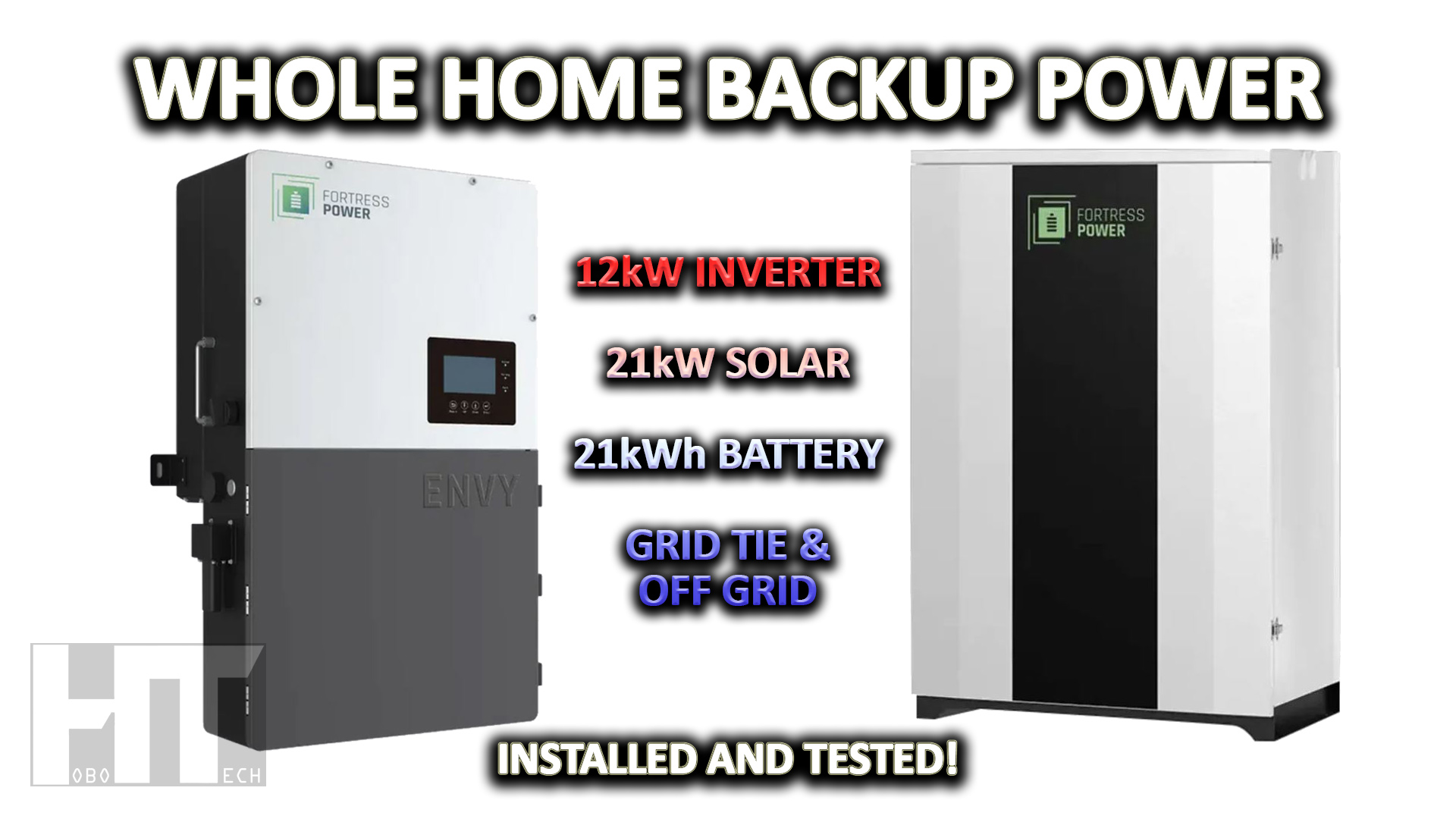
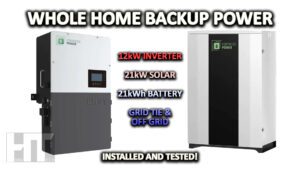
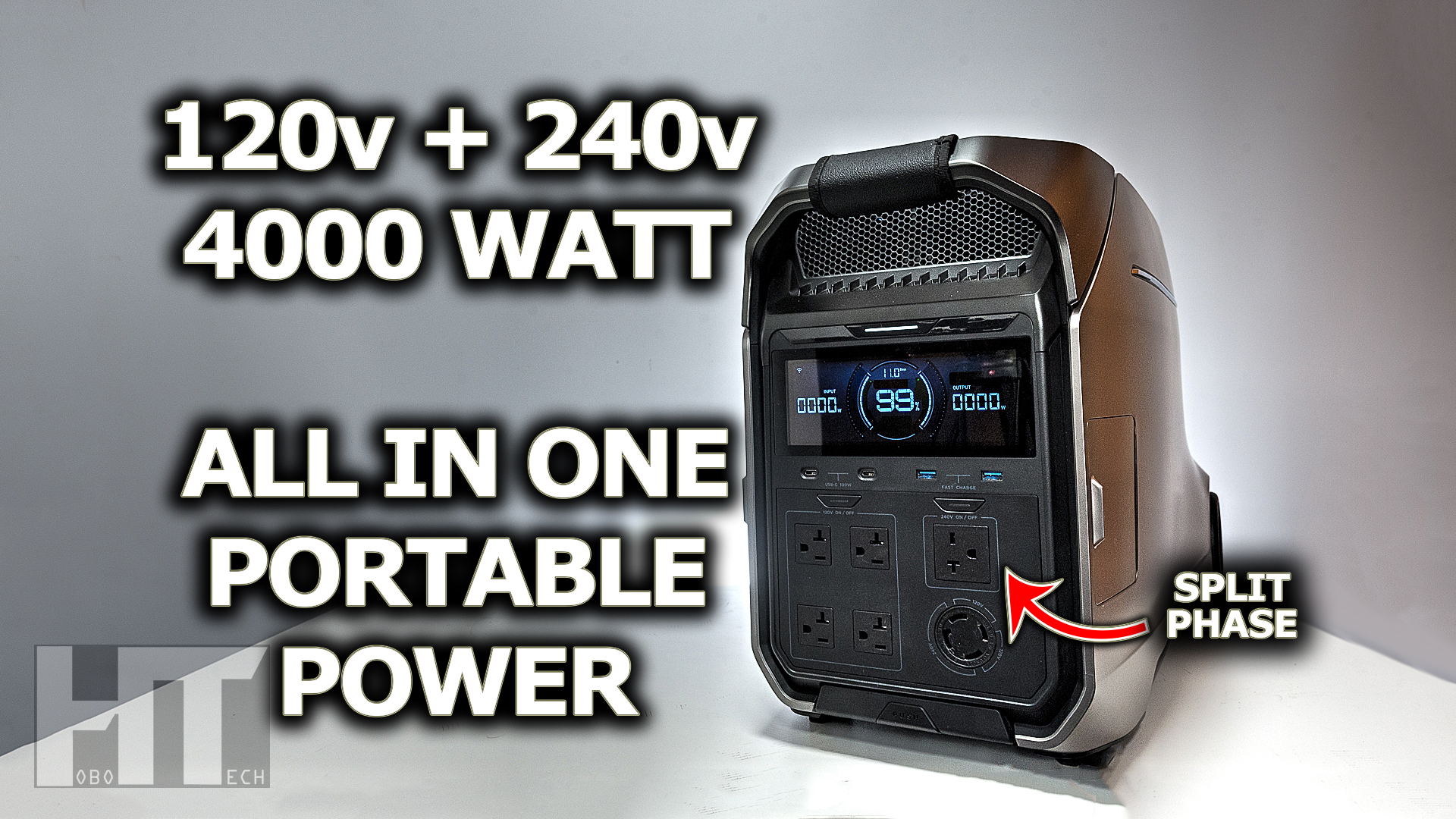
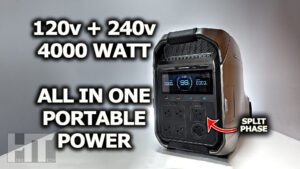
You must be logged in to post a comment.